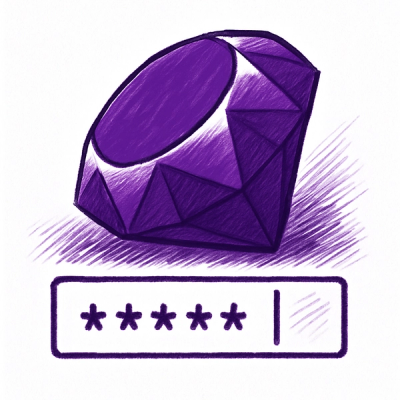
Security News
npm Adopts OIDC for Trusted Publishing in CI/CD Workflows
npm now supports Trusted Publishing with OIDC, enabling secure package publishing directly from CI/CD workflows without relying on long-lived tokens.
✨ A CLI tool to search CVEs from the NVD API based on product/version (CPE lookup).
Install via pip:
pip install vuln-checker
Or from GitHub:
git clone https://github.com/skm248/vuln-checker.git
pip install -r requirements.txt
cd vuln-checker
pip install .
Prerequisites: 1. Obtain an NVD API key from https://nvd.nist.gov/developers/request-an-api-key and set it as an environment variable NVD_API_KEY or replace the placeholder in the script. Follow these steps to request a key: • Open your preferred web browser and navigate to https://nvd.nist.gov/developers/request-an-api-key • On the NVD - Request an API Key page, complete the following fields: 2. Organization Name: Enter the name of your organization. 3. Email Address: Provide a valid business email address. 4. Organization Type: Select the type that best represents your organization from the dropdown menu. • Carefully read and understand the NVD - Terms of Use section. • Scroll to the bottom of the Terms of Use and check the "I agree to the Terms of Use" checkbox to accept the agreement. • Click the submit button to send your request. • Check your email (including spam/junk folders) for a message from NVD containing a single-use activation hyperlink. This email is sent to the address provided. • Click the hyperlink within seven days to activate and view your API key. If not activated within this period, you must submit a new request.
Set the NVD_API_KEY environment variable using one of the following methods based on your operating system:
Temporary (Current Session):
your_actual_api_key with your NVD API key:
set NVD_API_KEY=your_actual_api_key
• Note: The variable is unset when the Command Prompt window is closed.
Persistent (All Future Sessions):
Temporary (Current Session): 1. Open PowerShell. 2. Run the following command, replacing your_actual_api_key with your NVD API key: $env:NVD_API_KEY = "your_actual_api_key" 3. Run the script in the same PowerShell session: python main.py --products "jquery:1.11.3,1.11.5" --format json • Note: The variable is unset when the PowerShell session is closed.
Persistent (All Future Sessions): 1. Open PowerShell with administrative privileges. 2. Run the following command, replacing your_actual_api_key with your NVD API key: [Environment]::SetEnvironmentVariable("NVD_API_KEY", "your_actual_api_key", "User") • Use "Machine" instead of "User" for system-wide persistence (requires admin rights). 3. Open a new PowerShell session and verify with $env:NVD_API_KEY. 4. Run the script in the new session.
bash export NVD_API_KEY=your_actual_api_key
3. Run the script in the same terminal session:
bash python main.py --products "lodash:3.5.0" --format json
• Note: The variable is unset when the terminal session is closed.export NVD_API_KEY=your_actual_api_key
source ~/.bashrc # or source ~/.bash_profile or source ~/.zshrc
vuln-checker –-help
Examples:
Single Product via Command-Line:
vuln-checker --products "jquery:1.11.3,1.11.5 lodash:3.5.0" --format html --output custom_report.html
• Fetches CVEs for multiple products/versions provided as a comma-separated list.
Batch Processing with CSV: • Create a products.csv file with the following format:
products,versions jquery,1.11.3,1.11.5 lodash,3.5.0
• Run:
bash vuln-checker --input-csv products.csv --format csv --output output.csv
• Processes all product/version pairs from the CSV.
Filter by Severity:
vuln-checker --products "jquery:1.11.3,1.11.5" --severity critical,high --format json --output output.json
• Filters CVEs with HIGH severity only.
Specify Output File:
vuln-checker --input-csv products.csv --format html --output custom_report.html
• Saves the report to a custom file name.
--version You can now check the current installed version of the vuln-checker tool using:
```bash
vuln-checker --version
```
• This fetches the version directly from the pyproject.toml file, ensuring consistency with your package metadata.
--upgrade Easily upgrade to the latest version of vuln-checker from PyPI using:
```bash
vuln-checker --upgrade
```
This command will:
To auto-confirm the upgrade (without a prompt), use the --yes flag:
```bash
vuln-checker --upgrade --yes
```
⚠️ If you already have the latest version installed, the tool will skip the upgrade.
--input-csv INPUT_CSV Path to CSV file with 'product' and 'version' columns
--products PRODUCTS Product/version mapping. Supports one or multiple products and versions. E.g., 'jquery:1.11.3,1.11.5 lodash:3.5.0,3.59'
--severity SEVERITY Filter by comma-separated severities (e.g. LOW,HIGH,CRITICAL)
--format {json,csv,html} Output format
--output OUTPUT Output filename (e.g. report.html, results.csv, output.json)
--version Show tool version
--upgrade Upgrade vuln-checker to the latest version on PyPI
--yes Auto-confirm prompts like upgrade confirmation
This project is licensed under the by Sai Krishna Meda.
FAQs
CLI tool to fetch CVEs using NVD API
We found that vuln-checker demonstrated a healthy version release cadence and project activity because the last version was released less than a year ago. It has 1 open source maintainer collaborating on the project.
Did you know?

Socket for GitHub automatically highlights issues in each pull request and monitors the health of all your open source dependencies. Discover the contents of your packages and block harmful activity before you install or update your dependencies.

Security News
npm now supports Trusted Publishing with OIDC, enabling secure package publishing directly from CI/CD workflows without relying on long-lived tokens.

Research
/Security News
A RubyGems malware campaign used 60 malicious packages posing as automation tools to steal credentials from social media and marketing tool users.

Security News
The CNA Scorecard ranks CVE issuers by data completeness, revealing major gaps in patch info and software identifiers across thousands of vulnerabilities.